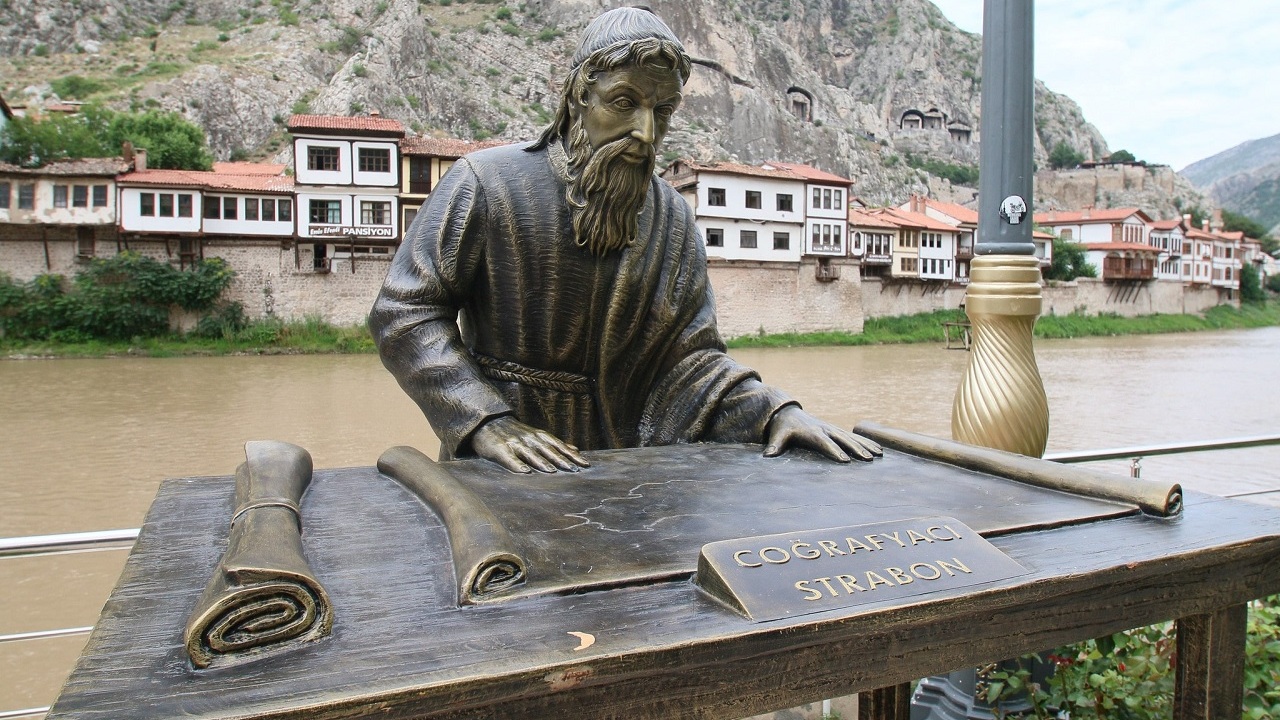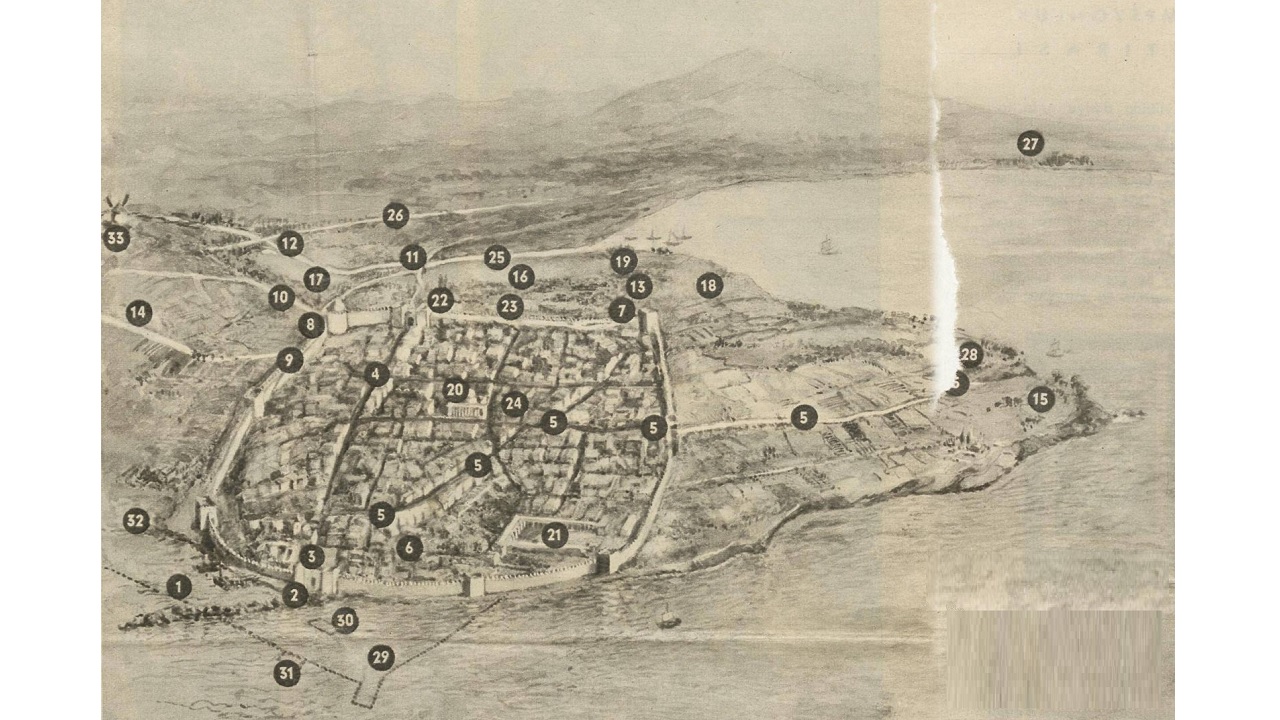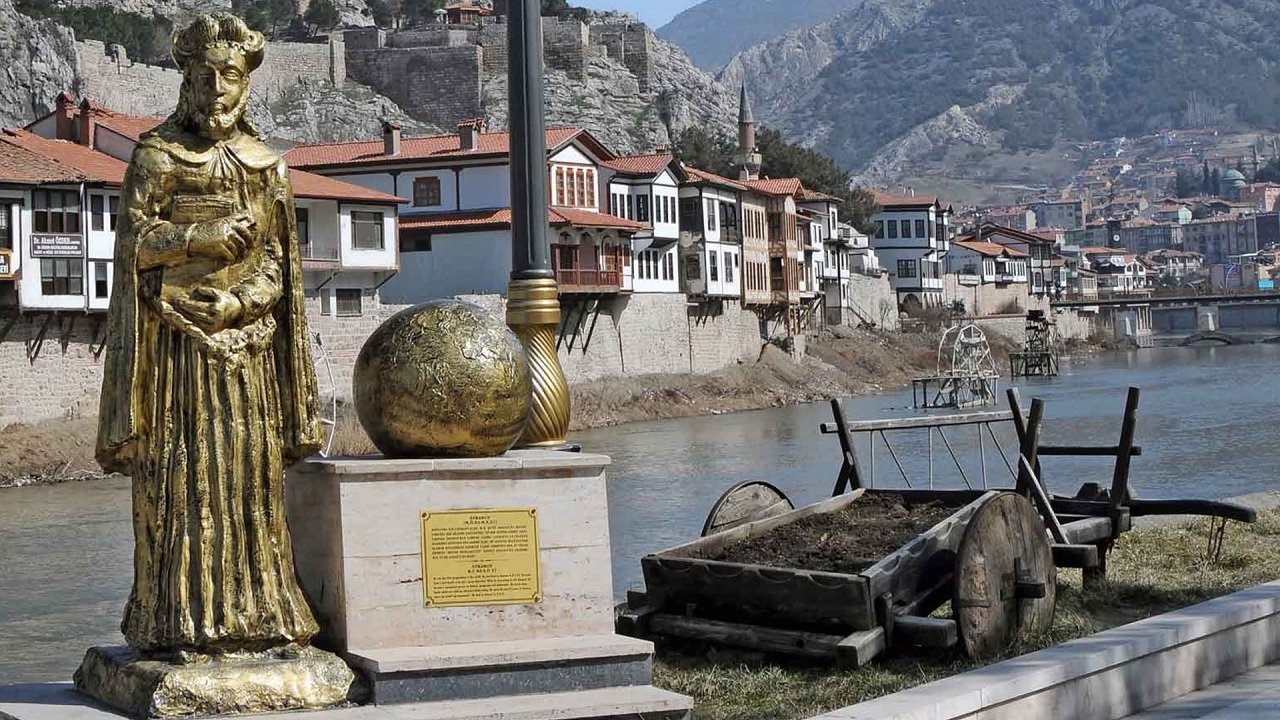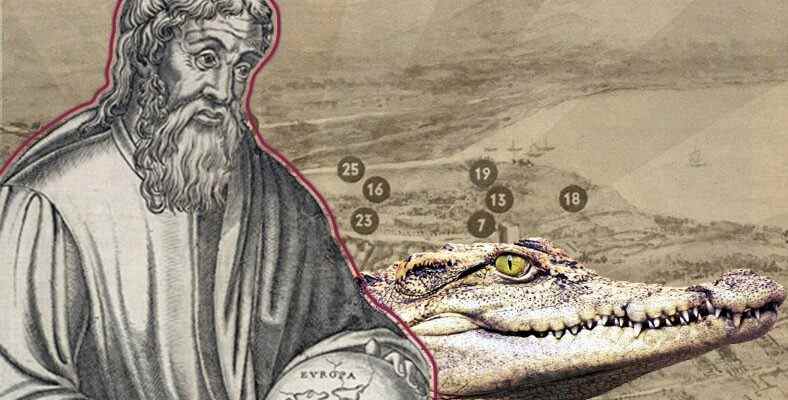People who lived thousands of years ago laid the foundation of today’s social and positive sciences. One of them is Strabo, known as the first geographer of history. Let’s take a closer look at Strabo, who traveled throughout his life and talked about the Roman Empire with the nations living on it, and what are his contributions and works to the geography that allow us to talk about him even today.
The science of geography, about which studies are carried out with many different technologies, especially satellites, was not an easy field thousands of years ago. People like Strabo, who is considered to be the first geographer of history, traveled throughout their lives and conducted research on geography. The one who carries the name Strabo to this day his contributions to geography and the works he wrote, even if some of them are lost.
Strabon, who was born in Anatolian lands, traveled every inch of the Roman Empire until the day he died, and made geographical studies. What distinguishes his works from others is that he also examined the nations living in the lands he studied and the relationship of these nations with geography. Some of the things he writes are interesting even to non-experts. Bride Who is Strabo, what are his contributions to geography and what are his works? Let’s examine the most frequently asked questions in detail.
Who is Strabo? A genius born in our land:
Strabo was born on the territory of the Roman Empire, which is today within the borders of Amasya province. He had blood ties to the Roman aristocrats. He is thought to have been born into a wealthy family. Having a classical Greek education and taking rhetoric lessons from Aristodemus is the biggest proof that he was not an ordinary person.
He is a historian, geographer, and philosopher, but his surviving work is geography-based. Strabo is the first geographer of history possible to say. Strabo, who spent a long time in the capital of the empire, in Greece, Egypt, and Alexandria, had Aristotelian views in his early years, but was influenced by Athenodoros, one of the mentors of the emperor Augustus, and approached the views of the Stoic school.
Although Strabo was born in Amasya in 64 BC and died in this city in 24 AD. from his youth He did not stay idle for a moment and toured the lands of the Roman Empire. Even a small part of the countless works he wrote is full of historical and geographical details that illuminate his period.
Strabo’s works and importance:
The first work known to have been written by Strabo, consisting of 43 volumes. Historica Hypomnemata that is, the work called Historical Memories. This work lived between 203 – 120 BC. It is a continuation of the historiography started by the historian Polybius. The work, of which only 19 volumes survive, begins with the destruction of Corinth and Carthage in 146 BC and covers a wide period until the Battle of Actium, where Caesar died.
Undoubtedly, Strabo’s most important work is luckily most of it has survived geographumena is his work. Geography In this 17-volume work, also known as Strabo; He was clearly inspired by historians such as Eratosthenes, Hipparchus, Epheros, Polybios, and Poseidonios.
Geographumena is not only a study of geography, but also The history of the peoples living in those geographies was also examined. and the relationship between geography and civilization. Because of these features, it differs from the work called Geographike Aphegesis, which was written by Ptolemy in the following years and has much more detailed geographical information.
What are Strabo’s contributions to geography?

Strabo was born in 64 BC, went to Rome in 44 BC and stayed in this city until 31 BC. He traveled all over Greece in 29 BC, He went to Egypt in 28 BC and stayed in Alexandria for a long time. During all these journeys, he also made examinations in the regions he passed through.
In fact, when we look at the dates Strabo lived and studied, it is possible to say that it is more recent than those who did similar studies. Therefore, it may be a little confusing why this name is the first geographer, but think about it like this; unless geography is studied using a science and scientific methods ‘A river runs through here.’ It doesn’t mean more than that.
Strabo is the first geographer of history, as he undersigned the first geography studies as we know them today. Even for examining the relationship of geography with history It is possible to say that he is the ancestor of even the social sciences. In addition to all these, Strabo, as a first in ancient times, examined volcanic movements and explained all these through a cause-effect relationship. In this respect, it is possible to say that he is a geoscientist.
According to Strabo, there was a river full of crocodiles in Kadıköy:

Strabo’s two sentences has;
“A little inland from the sea was a spring in which little crocodiles lived.”
“There were crocodiles in the little spring a little bit inside Chalcedon.”
Kalkedon is the old name of the district of Istanbul, which we know as Kadıköy today. Strabo clearly states that there is a crocodile-filled river in Kadıköy. Well where is it? Experts researching these sentences point to Kuşdili Creek, known as Kurbağalıdere.
The bed of Kuşdili Stream, located in the Kadıköy district of Istanbul today, is filled with alluvium. However, from this There was a river flowing here thousands of years ago. Considering the historical fact that some captives and slaves were sacrificed to crocodiles in the years when the Roman Empire occupied Anatolia, it is highly likely that the river that Strabo pointed to was the Kuşdili Stream, known today as Kurbağalıdere.
In what age did Strabo live, where did he die?

Strabon, who was born in Amasya in 64 BC, traveled every inch of the Roman Empire and turned his geographical studies into immortal works. returned to his native land and died in 24 BC. The age in which Strabo lived; It is the Roman Period in the Iron Age of the First Age, which we accept as ancient history.
Strabo’s words from the Geographumena:
It is necessary to listen to what the ancient historians say. For example, Xanthos, who wrote the “History of Lydia,” describes the strange changes that this country often faced, as I pointed out earlier. Indeed, they considered this place as the place where the legend of the Arims took place and where the Typhōn suffered, and they called it the land of Katakekaumenē. You reach the country called Mysia and Maionia, which is five hundred stadia long and four hundred stadia wide, and called Katakekaumenē. There are no trees here; There are only vineyards where Katakekaumenē wine, which is not inferior to any of the famous wines, is produced.
Known as the first geographer of history Who is Strabo, what are his contributions to geography and what are his works? We talked about the details you need to know by answering frequently asked questions. The changes seen in the world we live in even over the course of a few thousand years are astonishing. You can share your thoughts on the subject in the comments.
